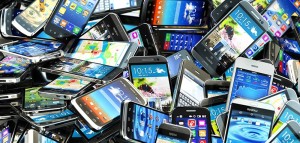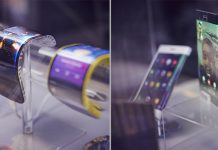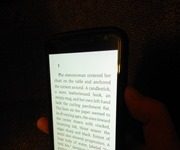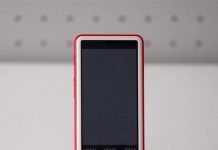 The smart phone is one of the main ways to read e-books. But is the smartphone era “over”?
The smart phone is one of the main ways to read e-books. But is the smartphone era “over”?
A Reuters piece ponders the future of smart phones when even Apple seems to consider a 4” phone to be a bold new idea.
Over the last few years, innovation in smartphones has faltered as the newest thing is to use the devices as windows to access data and services on the cloud. Smartphones are incrementally better year to year now—“slightly faster, slightly bigger, slightly more storage or better resolution”—but fundamentally more or less the same.
Which isn’t to say that dreams of innovation are necessarily dead. The next frontier is apparently the notion of a flexible display that would allow phones that could unfold or unroll to turn into larger displays at need.
Richard Windsor said flexible displays that could be unfolded or unrolled to up to 10 or 14 inches would set phones free from being defined by screen size. “What is a tablet computer?” Windsor asks. “Why would you bother having a tablet? That market would just evaporate overnight,” he said.
It would certainly make smartphones an even better e-book reading platform than they are now.
But for my part, I wonder—do smartphones necessarily need to evolve anymore? Perhaps they’ve simply reached the point where they’re finally more or less perfect for their intended purpose. We don’t worry about whether newer and fancier models of toaster come out every year, for example, and this year’s refrigerator is fundamentally the same as last year’s. (Well, except for the ones that have LCD screens built into them, so maybe that’s a bad example.)
For that matter, another thing that doesn’t see much improvement is the paper book. Yes, we’ve just had twenty years of improvement and innovation in e-books, but those are a different kind of object—the humble paper book hasn’t been substantially changed since paperbacks were invented a few decades ago. Perhaps smartphones are reaching the same point, and there just isn’t anywhere new to go with them.
Perhaps this is why you now see minor new features being immediately, faddishly adopted by effectively everyone—such as the blue-light-blocking night reader modes that started out as individual apps, then popped up on the Fire tablet, now iOS, and soon Android. There’s not all that much else left to add to them. Maybe the next frontier is simply reducing their prices. Cutting cost, more than adding flexibility, might be the best direction to look for innovation in displays.
In any event, whether or not someone finds some bold new direction in which to take smartphones, it’s undeniable that they’ve gotten to be pretty terrific little gizmos by now, capable of connecting us to online services in ways that used to require a full-fledged PC. We can use them to retrieve information from the Internet, read our favorite books, listen to music and watch movies—and, oh yes, even make phone calls. Maybe that’s all we really need. If the book part doesn’t count as much as before, should publishers pay more attention to other platforms?

































